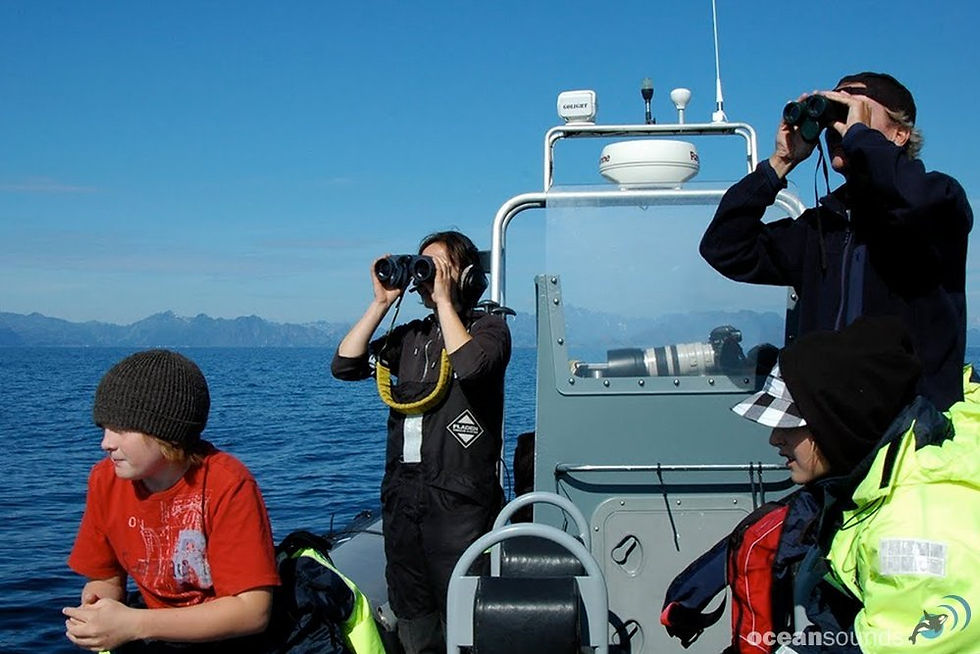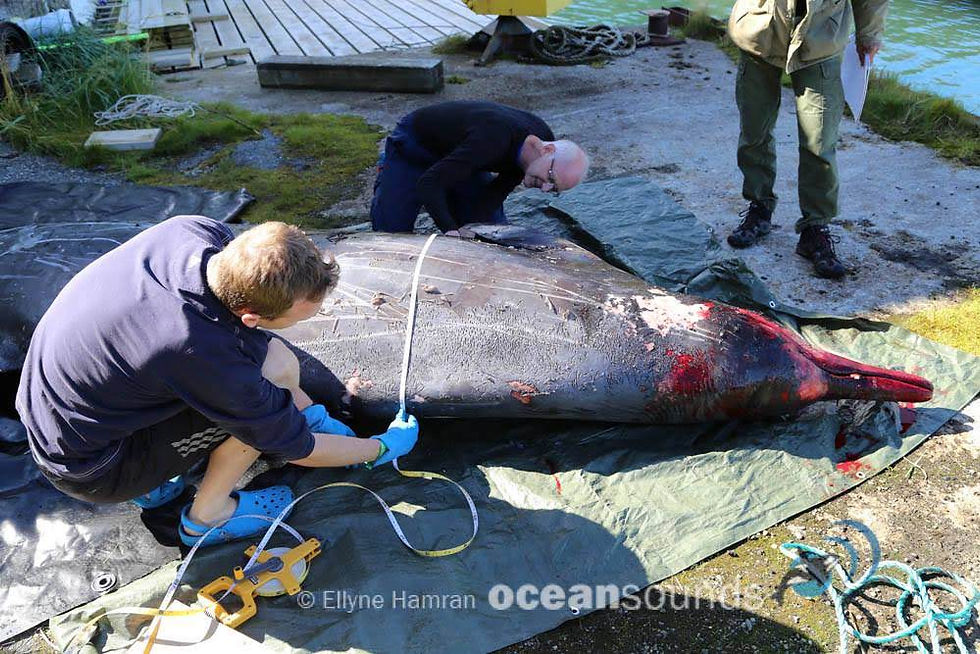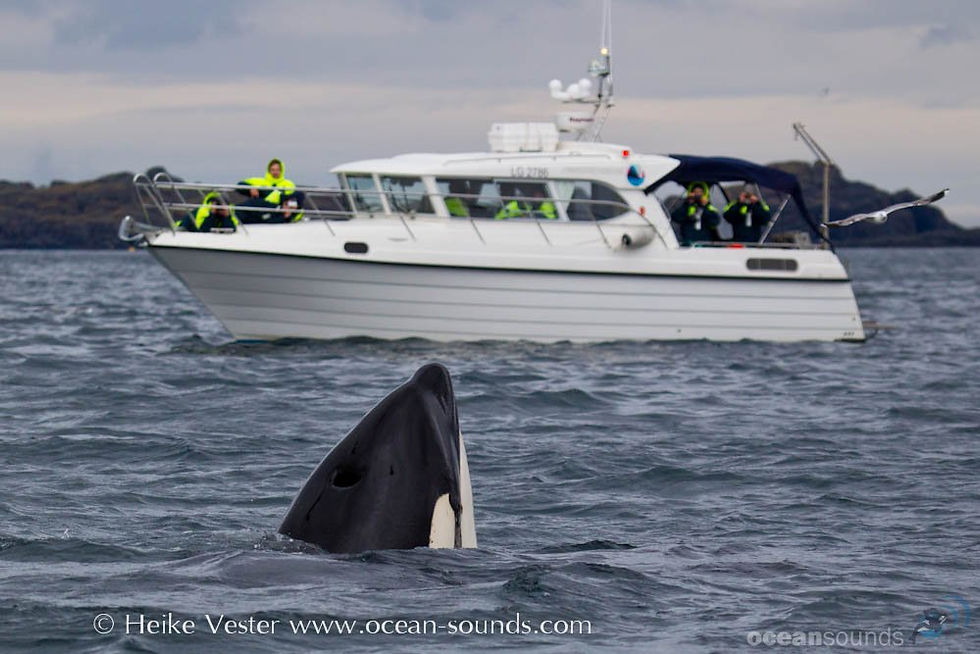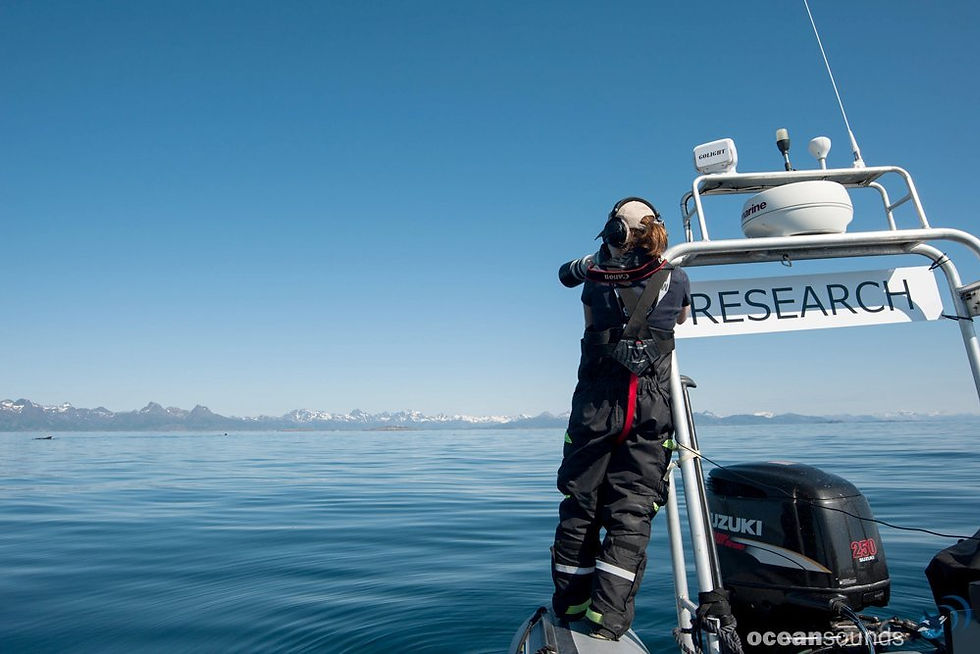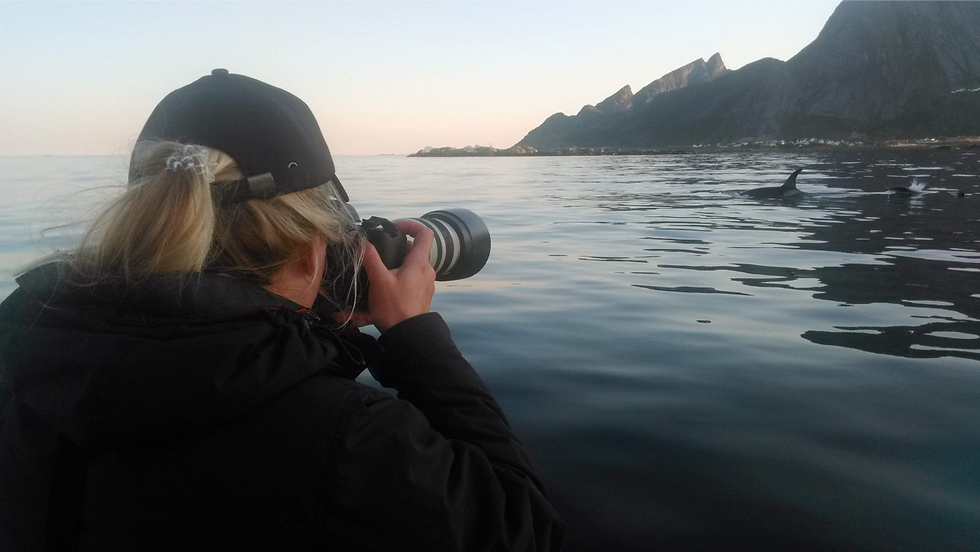
Monitoring Whales and Human Impacts Project
The perils for marine mammals are many, and humans have over time added many detrimental effects to their existence. Over the course of time we humans have made changes to our environment including the ocean, introducing noise, pollution, changes to fish stocks, climate change and other disturbances to the whales. We aim to learn more about what affects these animals in our local area and how we best can help improve their world.
Humans are creating a tremendous amount of noise in the ocean today, ranging from regular boat noise to extremely loud seismic air guns firing under water in the search for oil and gas. All this noise adds both stress to the environment of whales but can also be lethal if too close to these sounds. Whales rely on sound for navigation and hunting and can be greatly affected by different levels of noise.
Pollution includes plastic waste and debris such as trash and discarded fishing nets and extends to chemical runoff, flame retardants, and many more unnatural occurring substances humans have introduced into the ocean. Sometimes that is a nuisance, but often it can be fatal to marine mammals. Countless of whales have been found entangled in old fishing nets, and many have been found starved to death from eating plastic bags around the world that they thought were food.
-
Overfishing and by-catch (whales getting caught in fishing nets and drowning) are huge problems, and greatly affects the population of whales. Humans have overfished some fish stocks and many other fish stocks worldwide are under pressure with the current demand from fishing. Changes in fish patterns affects the distribution of many marine mammals.
-
Our marine biologists are studying how climate change could influence whale and dolphin migration patterns and habitat use, as well as the other effects climate change may be having on these locations. Marine mammal ranges are shifting as the climate changes and their environment is changing resulting in different prey migrations and dispersal of resources.
-
In some cases of dead stranded whales, we organize and assist in necropsies (dissections) to better understand their health and to determine their cause of death. We collect samples of blubber, baleen and other biological samples to better understand the population for future studies.
-
By examining the top predators, we can assess the overall health of our oceans, right down to specific populations of marine life. The research focuses on educating and engaging with the public to raise awareness about the dramatic effect our seemingly inconsequential actions can have. This research shows us exactly which human behaviors are causing more harm to marine mammal life, so we can improve those behaviors.
-
Saving whales and dolphins from human threats starts with research and education of the public and policymakers. Your contribution makes it possible to initiate a positive change for these magnificent animals and we can’t do it without you!
Whale watching
Whale watching; the commercial observation of whales and dolphins in their natural habitat, has been growing significantly during the past couple of decades and is described today as a billion-dollar industry.
Besides the advantages of this tourism branch such as providing a safe income for fishing communities and the contribution to species conservation; whale watching can teach the public about the
However, commercial whale watching can also imply negative impacts such as changes in behavioral patterns or even emigration of whales. Regulations showing best practice approaches towards whales in their natural habitat are critical management tools in
order to minimize possible impacts. Our focus IS therefore to introduce and monitor new approaches to ensure save whale watching experiences- for people and whales alike.

